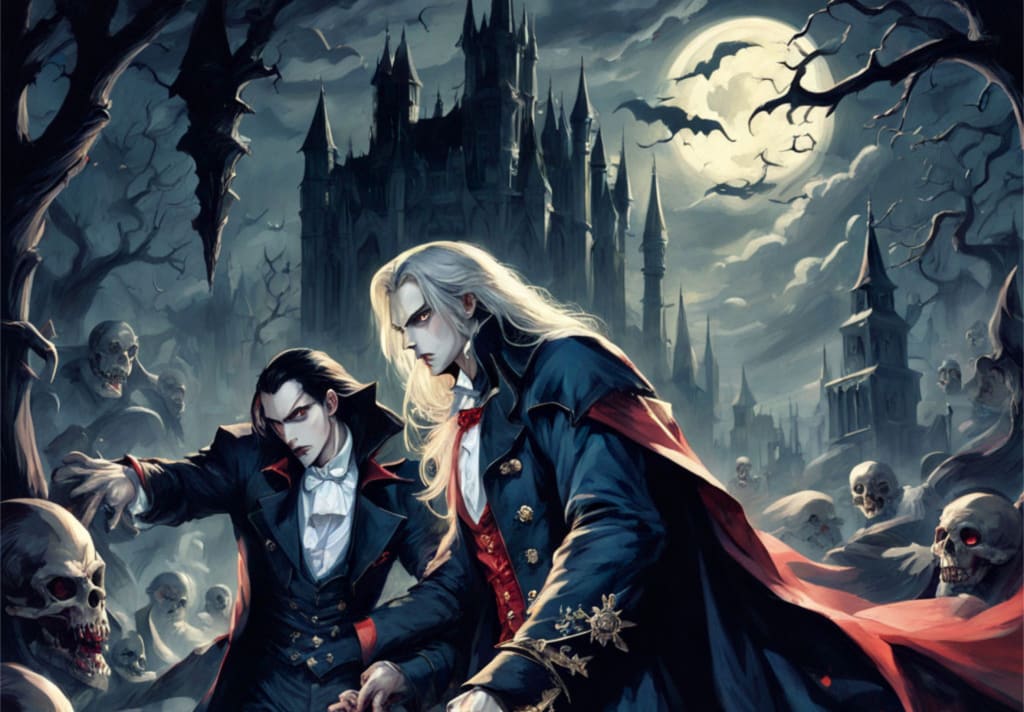Where Did the Legend of the Vampire Come From?
Not from Bram Stoker.

Vampires appear in many novels and films, from the cult classics like The Lost Boys to the hugely popular series Twilight. But do many people know where they originated from? Who first came up with the concept of the vampire?
Many will state that the first Vampire novel was Bram Stoker's Dracula, published in 1897. Although this was one of the novels that left many people suspicious of those who could not walk in sunlight, it was not the origins of the legend; it wasn't even the first book written on the subject.
The first known story on Vampires was published in 1819. It was a short story named Vampyre by John Polidori. Polidori was one of the friends in Switzerland who took part in storytelling sessions to pass the time. Mary Shelley's Frankenstein primarily overshadowed this story. The main character of Vampyre was said to be inspired by Lord Byron, another member of the famous writing holiday. This, however, was also not the origin of the legend of the vampire.
So, if neither of these books created the vampire, where does the concept we are all familiar with start?
Vampire Characteristics
Many stories and films on vampires share common traits. They all drink human blood. It is this process of draining the victim of blood and then getting them to drink it that transforms them into a vampire. Most of them are said to hunt at night.
Many are said to hunt at night and turn to dust in sunlight. This is a concept that Stephenie Meyer threw out in Twilight when she talked about Edward glittering in the light.
Other characteristics open to interpretation seem to be the reaction to garlic, its appearance in the mirror, and how to effectively kill it.
Vlad Draculea
Despite not being the first book on the subject, Bram Stoker is the one most people hold as the authority on the vampire.
Count Dracula was named after Vlad Draculea, who was born in Transylvania, Romania. He ruled over Romania between 1448 and 1477. He was said to be a brutally cruel ruler who fought off the Ottoman Empire.
His favourite method of killing was to impale his enemies on a wooden stake and then dine amongst them. Some legends say he would dip his bread into their blood. It is clear to see how this could have sparked the traditional vampire.
Surprisingly, according to Dracula expert Elizabeth Miller, Stoker didn't base Dracula on Vlad Draculea, although the similarities are hard to ignore.
Mercy Brown
Another infamous vampire is that of Mercy Brown. Unlike Draculea, though, there are records that show Mercy was a real person. She lived in Exeter, Rhode Island, and was the daughter of a farmer.
The family was decimated in the late 1800s when tuberculosis took all of the family members, including Mercy. This did not stop the community from making Mercy the scapegoat for the deaths.
When her body was exhumed, she displayed no sign of decay. The townspeople could find that her being a vampire was the only explanation for this. They cut her heart out and burned it, feeding her ashes to her sick brother, who surprisingly died shortly after.
This was not uncommon for the times; often, one family member would be blamed for mass deaths in the family. Often, the dead were exhumed so they could be searched for signs of vampirism.
Middle Ages
In the Middle Ages, vampire superstition thrived, especially during the plague. The disease often led to bleeding from mouth lesions, which, to the uneducated, was a sign of vampirism.
It was common during these times for those with unfamiliar physical and emotional illnesses to be labelled a vampire.
Researchers point to a condition known as porphyria, which is a blood disorder. This disorder causes severe blisters on the skin when exposed to sunlight. In a twist, some of the symptoms of this condition can be relieved by ingesting blood.
When a suspect died from this condition, a stake was often thrust through their heart to ensure they were dead. Other accounts state that the victim was decapitated or burned, all of which tie to the legend of vampires.
Carpathian Mountains
One popular story of vampires stems from 1730 in the Carpathian Mountains. Dr. Johannes Fluckinger was a regimental medical officer dispatched by his commander to survey a dreadful scene.
A small village on the edge of the Habsburg Empire was said to be under the curse of vampires. Records show that forty villagers exhumed thirteen who showed signs of being vampires.
Fluckinger learned that the first to be transformed was a soldier named Arnold Paole. He had fled his post in Turkey after being attacked by a vampire. Paole went on to meet a sudden, unexplained death.
Villagers then stated that they had seen the dead soldier walking around the village after nightfall. Since these sightings started, more than twenty people had died of a mysterious death.
The Origin of the Vampire
These stories were then reproduced in various languages, and it is thought that this was the start of the vampire narrative that Bram Stoker used in his novel Dracula.
These folklores, along with the limited understanding people had of natural events and decomposition, seem to be the origin of the vampire legend. Diseases such as schizophrenia and tuberculosis also added to this.
In the Journal of Folklore Research, Paul Barber said, "the vampire stories prove to be an ingenious and elaborate folk-hypothesis that seeks to explain otherwise puzzling phenomena associated with death and decomposition."
Juan Gomez-Alonso of the Servicio de Neurologia, Hospital Xeral in Vigo, Spain, argues that many of the primary attributes of vampires show remarkable similarities to the physical symptoms associated with rabies.
During the period when vampire tales started to emerge from Europe, a major epidemic of rabies in dogs, wolves and other wild animals was recorded.
Today's Vampire
The legend of the vampire can not be pointed to one source; instead, it was a collection of actual life events and folklore that was combined and spun over many years into the version it is now.
As more books are produced on the subject and authors add their interpretations, it is clear that the legend might once again change. Regardless, it is a concept that inspires many people even today.
Searching the internet will show you several communities worldwide that self-identify as vampires. They drink small amounts of blood to stay healthy. When I think of the vampire, I always think of Count Dracula.
About the Creator
Sam H Arnold
A writer obsessed with true crime, history and books. Find all my dedicated newsletters whether you are a true crime fan, bookworm or aspiring writer on Substack - https://substack.com/@samharnold
Enjoyed the story? Support the Creator.
Subscribe for free to receive all their stories in your feed. You could also pledge your support or give them a one-off tip, letting them know you appreciate their work.






Comments
There are no comments for this story
Be the first to respond and start the conversation.